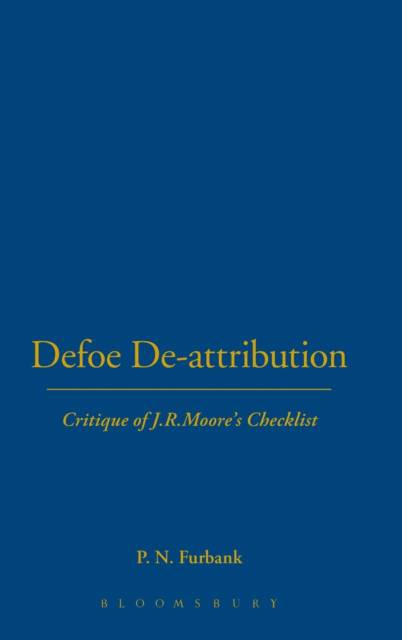
- Afhalen na 1 uur in een winkel met voorraad
- Gratis thuislevering in België vanaf € 30
- Ruim aanbod met 7 miljoen producten
- Afhalen na 1 uur in een winkel met voorraad
- Gratis thuislevering in België vanaf € 30
- Ruim aanbod met 7 miljoen producten
Zoeken
Omschrijving
Daniel Defoe was one of the most important and best-known writers of the eighteenth century but there is a feeling among scholars that the Defoe 'canon' is a remarkably strange and not very satisfactory construction. Between 1790, when the first bibliography of Defoe appeared, and 1971, when J.R. Moore published the second edition of his Checklist, the canon had swollen from just over a hundred items to 570. A large proportion of these attributions had been made in the nineteenth and twentieth centuries, on the basis of features of style, 'favourite phrases' and resemblance to Defoe's known views. This book is a list of all the items in Moore's Checklist (the current authority on the Defoe canon) that at present the authors consider questionable with in each case a note as to who was the first attributer, a brief synopsis and an explanation of the reasons for doubting the ascription.
Specificaties
Betrokkenen
- Auteur(s):
- Uitgeverij:
Inhoud
- Aantal bladzijden:
- 160
- Taal:
- Engels
Eigenschappen
- Productcode (EAN):
- 9781852851286
- Verschijningsdatum:
- 2/08/2003
- Uitvoering:
- Hardcover
- Formaat:
- Genaaid
- Afmetingen:
- 158 mm x 246 mm
- Gewicht:
- 439 g

Alleen bij Standaard Boekhandel
+ 593 punten op je klantenkaart van Standaard Boekhandel
Beoordelingen
We publiceren alleen reviews die voldoen aan de voorwaarden voor reviews. Bekijk onze voorwaarden voor reviews.








